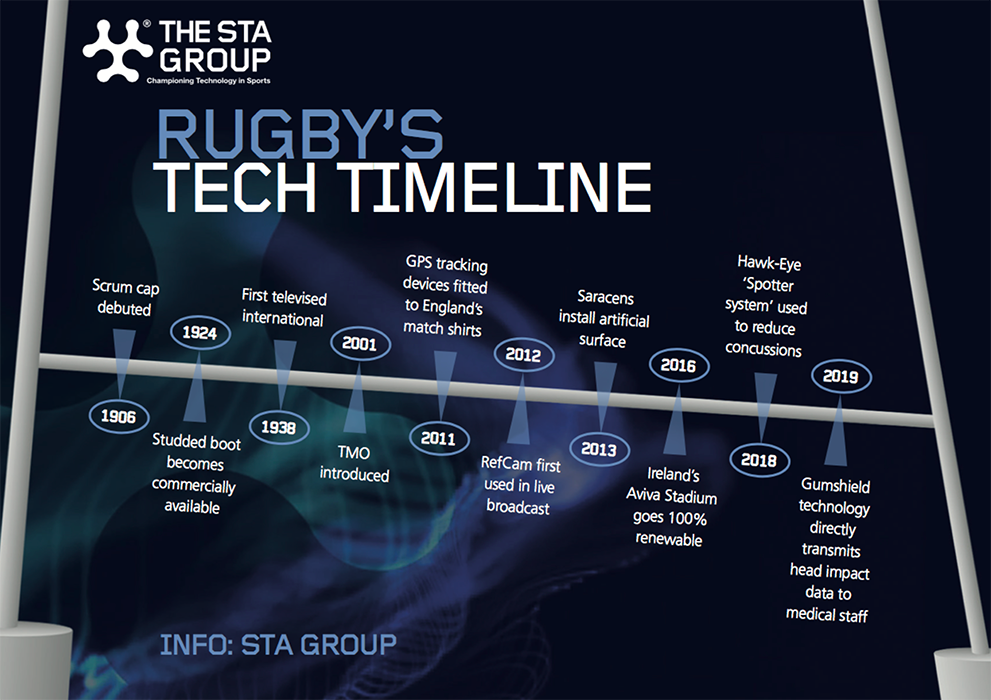The Technology Evolution In Rugby
September 27, 2019
While football is currently going through a rocky period as VAR is being rolled out into almost all major competitions around the world, at the Rugby World Cup in Japan, technological advancements like the video referee have been commonplace
Innovation in the game of rugby has skyrocketed in the last 20 years and whilst many of the tech-led innovations have related to fan engagement and sponsorship activation, the topic of player welfare has been forefront. The issue of head trauma in sport generally, and rugby specifically, has never been so prevalent, with governing bodies across the board becoming aware of their responsibilities in this area. Whilst concussion is no longer the preserve of traditional contact sports, it is fair to say that rugby, with NFL, has led the charge in tackling this important topic.
This openness to innovation isn’t new, as the timeline from the Sports Technology Awards – the leading global celebration of tech-led innovation in sports – shows.
Albeit in a slightly sporadic way, the game has constantly developed and continually updated the use of technology over the past century, and been much more open to modernisation in comparison to sports like football and cricket, with India initially refusing to accept DRS for a number of years. Rugby’s first change was the introduction of scrum caps, originally debuted all the way back in 1906 in a fixture between South Africa and Wales. Studded boots were then introduced in 1924 and the first televised international match saw Scotland beat England in 1939.

Since the turn of the millennium development of technology has been much faster for the game, with the TMO being introduced in 2001 and GPS tracking devices worn by England in match shirts in 2011. Even this year, gumshield technology became available that can now directly transmit head impact data to medical staff, something very important with concussion awareness now being more prevalent than ever.
Whilst the issue of head trauma continues to dominate it is surprising that a standardized solution has yet to be found. As the commitment to professionalism for women players grows as well, alongside female propensity to greater damage from injury, so will the requirement for gender equality in welfare.
So, what does the tech-led future hold for all players? In truth advances in this area have been sporadic but as all stakeholders, especially players, become better educated on the long-term repercussions of head trauma, technology, such as tracking analytics, improved head protection and gum shields, is more prevalent. Many female players, as the links between injury and menstruation are better understood, are opting to use period tracker apps, the first of which hit the mass market in 2015.
The big game-changer is likely to be saliva testing but currently it is still relatively early-stage. One key barrier to a quantum leap forward is that NGBs need tech to be standardized, scalable and easy-to-adopt; until this is forthcoming, World Rugby’s main option will be judicious guidelines and law-making.
More information about the Sports Technology Awards and STA Group can be found at www.sportstechgroup.org


